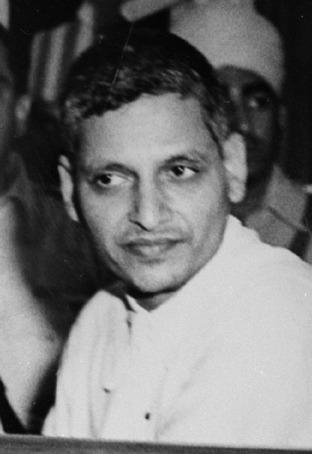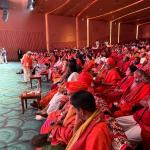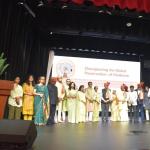The Global Hindu Heritage Foundation organized the Annual Appreciation Dinner at Radhakrishna Hindu Temple in Allen on November 8 to celebrate the Spirit of Sanatana Dharma, attended by more than 225 people. It was an unforgettable evening of tradition and culture. Many dignitaries from the community, Burt Thakur, Suresh Manduva, Sri Dhruva Prabhu, Hemant Kale, Srini Gurrapu, and many other esteemed community leaders attended the event.
GHHF is grateful to all the representatives from Karya Siddhi Hanuman Temple, DFW Hindu Temple, Radha Krishna Temple, BAPS, SEWA Dallas, "The 10YEC”, Dharma Jagruthi Foundation, HERO - Hindu Empowerment & Reformation Org, and other organizations that attended the event.
Utkalaa Dance Academy, Nādaarpana Veena Recital, and Kalaripayattu Martial Arts performed three cultural events. They have done a wonderful job of demonstrating the richness of our culture.
Hemant Kale served as the Master of the Ceremony, demonstrating his skill and energy, coupled with his rich knowledge, and conducted the event superbly. Sirish has done a very good job coordinating the cultural event and distributing gifts to all the dignitaries.
Global Hindu Heritage is ever grateful for the core group who spent countless hours not only on the Annual dinner day but also on the day-to-day activities of GHHF, including weekly meetings to make people aware of the mission of GHHF, coordinating the program, and contacting several new people throughout the year.
The core group consists of Chandra Movva, Prashant Nanganuri, Chandrakant Reddy, Kishore Deevi, and Suresh Babu Pusuluru. Without their dedicated and passionate involvement, the event would not have been possible. They planned the event meticulously to ensure the mission of GHHF is presented, awakening people to the 16 activities GHHF is conducting in the states of Bharat and Bangladesh. Also, Annam Redy, Siddhartha, and many people have assisted with our activities over the years.
Speaking on the occasion, Prakasarao spoke about the responsibility of every Hindu to the motherland, Bharat, and the mother, Santana Dharma. Anne Besant said that “After a study of some forty years and more of the great religions of the world, I find none so perfect, none so scientific, none so philosophic, and none so spiritual as the great religion known by the name of Hinduism. The more you know it, the more you will love it; the more you try to understand it, the more deeply you will value it. Make no mistake; without Hinduism, India has no future.
Hindus have always been proud of their culture, their wisdom, and the richness of Sanatana Dharma for so many centuries. In fact, in the eleventh century, a Muslim writer, Al Beruni, observed that “Hindus believe that there is no country like theirs, no nation like theirs, no kings like theirs, no religion like theirs, no science like theirs.”
As parents, we must take full responsibility for transmitting the greatness of Hinduism to our children. Now we have so much knowledge readily available in the internet that we have to learn and communicate the knowledge to our children. We should emphasize that Hindu customs and traditions are based on science. Scientifically, its contribution is unparalleled – zero, infinity, value of pi, Decimal system, Concept of gravity, anatomy, astronomy, mathematics, algebra, trigonometry, Calculus, quantum physics, gravity, Theory of atoms, Heliocentric theory, plastic surgery, cataract surgery, dentistry, pregnancy, human anatomy, metallurgy, etc.
Also, we should educate our children about Nobel laureates who credited their Nobel prizes to the Bhagavad Gita and the Upanishads. Several Nobel laureates lauded the depth of knowledge in Hindu scriptures and always sought their wisdom, science, and spirituality to advance their own research. Whether in Physics, mathematics, science, surgery, or literature, they always looked toward Hindu scriptures for their guidance and inspiration. T.S. Elliot, who received the Nobel prize for literature in 1948, says that Indian philosophers make the great European philosophers look like schoolboys. Danish physicist and Nobel laureate Niels Bohr was fascinated with the Vedas. His remark, “I go to the Upanishad to ask questions,” reveals a great deal about his respect for India's ancient wisdom. Schrodinger said while referring to each particle in the universe as a wave function. He applauded the Mundaka Upanishad mantra that states: “The unity and continuity of Vedanta are reflected in the unity and continuity of wave mechanics. This is entirely consistent with the Vedanta concept of All in One.”
Every Hindu should take ownership of their mother and motherland to ensure they are preserved and protected. Annie Besant thought that "among the priceless teachings that may be found in the great Indian epic Mahabharata, there is none so rare and priceless as the Gita."
Without Hinduism, there is no Bharat Mata, no India. We have to protect her from the dark clouds hovering over us, the thunder of terrorism, the lightning of cruelty, deception, and allurement behind the mist, and even the brilliance of the sun is smeared with brutality and viciousness. Let us clear our jaundiced eyes. If the roots of Sanatana dharma are pulled out from the sacred soil of Bharat, we will subject our mother to untold misery, torture, and terror.
If Hindus do not protect her mother, who will do it; if Hindus cannot practice her traditions and culture, who will do it; if Hindus do not do it now, when is the right time; how long Hindus will remain silent, and indifferent; If we do not cling to her saree, how can we protect her from being disrobed; stop being a spectator and be a savior.
Let us stand up for our scriptures, stand with our spiritual leaders, stand for Sanatana dharma, adopt our timeless wisdom, promote unity, repel vicious attacks on Bharath, and take an oath to protect your mother and Motherland. Bharath Mataki Jai. Jai Hind.
Your donations are appreciated.
By Zelle: ghhfusaorg@gmail.com
PayPal: savetemples.org
By Check: You can also send a check payable to GHHF, 14726 Harmony Lane, Frisco, TX 75035.
It is tax-deductible.
By Rupees: call 601-918-7111; +91 83096 43979
{{album_1484}}
10 Nov 2025















 Urgent support needed for Bangladesh Hindus
Urgent support needed for Bangladesh Hindus 



